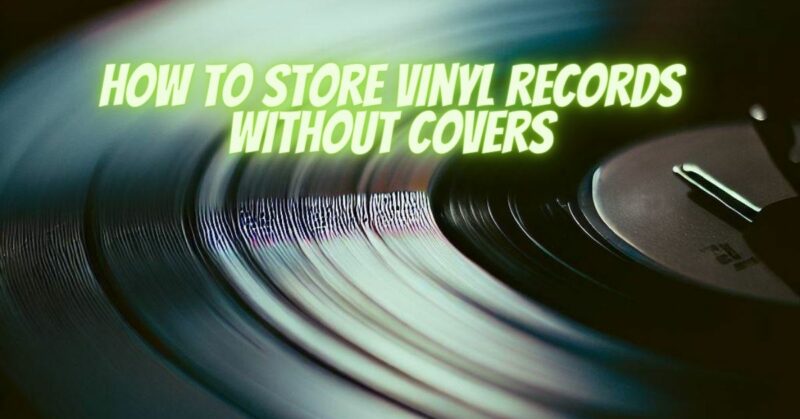The vinyl record’s allure lies not only in its captivating sound but also in its tangible and visual charm. Album covers not only offer a glimpse into the music within but also provide essential protection for the record itself. However, in cases where covers are missing, it’s crucial to take extra measures to preserve the integrity of the vinyl. This article delves into the steps you can take to safeguard vinyl records in the absence of covers, ensuring their longevity and maintaining sound quality.
The Importance of Album Covers
Protection: Album covers shield records from dust, dirt, and debris that could accumulate and affect playback quality.
Prevention of Scratches: Covers prevent scratches and scuffs that could arise from improper storage or handling.
Visual Appeal: Album artwork adds to the visual and aesthetic experience of owning vinyl records.
Alternate Solutions for Preserving Vinyl Records
1. Inner Sleeves: Invest in high-quality anti-static inner sleeves to provide a protective barrier for the record itself. These sleeves prevent dust and static buildup and reduce the risk of scratches during handling.
2. Outer Sleeves: Use outer protective sleeves to shield the vinyl record and inner sleeve from dust, dirt, and moisture. These sleeves come in various sizes to accommodate different types of records.
3. Proper Storage: Store the vinyl records vertically in a cool, dry environment, away from direct sunlight and sources of heat. This minimizes the risk of warping and deterioration.
4. Regular Cleaning: Clean the record before and after each play to remove dust and debris. A record cleaning brush and anti-static cleaning solution can help maintain the record’s surface.
5. Handling Carefully: When handling vinyl records without covers, be extra cautious to avoid touching the grooves and hold the record by its edges.
6. DIY Covers: Consider creating simple DIY covers using acid-free paper or cardboard to protect the records from dust and scratches. These covers can also include essential information about the album.
7. Stacking and Organizing: When storing records without covers, avoid stacking them on top of each other to prevent friction and potential damage to the grooves.
8. Re-Sleeving: If you come across records without covers, consider investing in replacement covers or obtaining proper sleeves to ensure their protection.
While the absence of album covers can pose challenges, it doesn’t have to compromise the preservation of your vinyl records. By implementing these alternative solutions and taking extra care in handling and storage, you can maintain the sound quality and longevity of your cherished vinyl collection. Whether you’re a dedicated audiophile or a casual listener, these measures allow you to continue enjoying the rich and authentic sound of vinyl records, even in the absence of their original covers.


